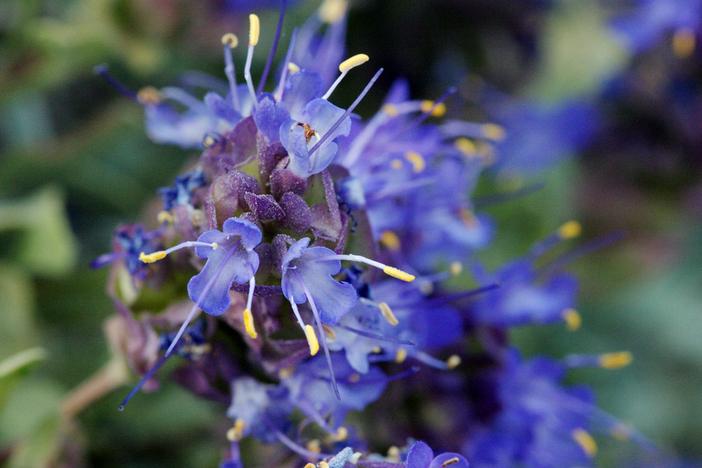Dorr’s Sage
(Salvia dorrii)
Dorr’s Sage (Salvia dorrii)
/
/

Cecelia Alexander
CC0 1.0
Image By:
Cecelia Alexander
Recorded By:
Copyright:
CC0 1.0
Copyright Notice:
Photo by: Cecelia Alexander | License Type: CC0 1.0 | License URL: https://creativecommons.org/publicdomain/zero/1.0/ | Uploader: aspidoscelis | Publisher: Flickr

































































Estimated Native Range
Summary
Salvia dorrii, commonly known as Dorr’s Sage, is an evergreen subshrub native to arid and semi-arid regions, including the Great Basin and Mojave, Sonoran, and Colorado Plateau deserts. It is well-adapted to open woodlands, shrublands, and desert scrub environments. This woody subshrub typically reaches 10–70 cm (4–28 in) in both height and width. The grey-green leaves are narrow, tapered at the base, and rounded at the tip, usually without teeth or lobes. They emit a strong, pleasant, and mildly intoxicating minty aroma when handled or crushed. Dorr’s Sage is notable for its inflorescences, which are spike-like clusters of numerous purple flowers that are bilaterally symmetric and variable in color, ranging from blue to purple to rose. The corolla tube is 6–13 mm (1⁄4–1⁄2 in) long, and the stamens and style extend beyond the flower, with the style forked at the tip. After pollination, the flowers desiccate but remain on the plant for an extended period.
Dorr’s Sage is valued for its drought tolerance, aromatic foliage, and attractive flowers, making it suitable for xeriscaping, rock gardens, and naturalistic plantings. It thrives in full sun and requires minimal water once established, preferring dry, well-draining soils. While it is generally low-maintenance, it can be susceptible to root rot in poorly drained soils and may attract browsing by deer. Gardeners should be aware that it does not transplant well due to its deep taproot, so it is best to plant it in its permanent location from the start.CC BY-SA 4.0
Dorr’s Sage is valued for its drought tolerance, aromatic foliage, and attractive flowers, making it suitable for xeriscaping, rock gardens, and naturalistic plantings. It thrives in full sun and requires minimal water once established, preferring dry, well-draining soils. While it is generally low-maintenance, it can be susceptible to root rot in poorly drained soils and may attract browsing by deer. Gardeners should be aware that it does not transplant well due to its deep taproot, so it is best to plant it in its permanent location from the start.CC BY-SA 4.0
Plant Description
- Plant Type: Shrubs
- Height: 1-2 feet
- Width: 2-3 feet
- Growth Rate: Moderate
- Flower Color: Blue, Purple
- Flowering Season: Spring
- Leaf Retention: Evergreen
Growth Requirements
- Sun: Full Sun
- Water: Low
- Drainage: Fast
Common Uses
Bee Garden, Bird Garden, Butterfly Garden, Deer Resistant, Drought Tolerant, Fragrant, Hummingbird Garden, Low Maintenance, Rabbit Resistant, Rock Garden, Showy Flowers, Street Planting
Natural Habitat
Native to arid and semi-arid regions, including the Great Basin and Mojave, Sonoran, and Colorado Plateau deserts, open woodlands, shrublands, and desert scrub environments
Other Names
Common Names: Grayball Sage , Purple Sage , Fleshy Sage , Mint Sage , Tobacco Sage , Desert Sage
Scientific Names: Salvia dorrii , Salvia dorrii var. dorrii , Audibertia dorrii , Audibertiella dorrii , Ramona dorrii
GBIF Accepted Name: Salvia dorrii (Kellogg) Abrams